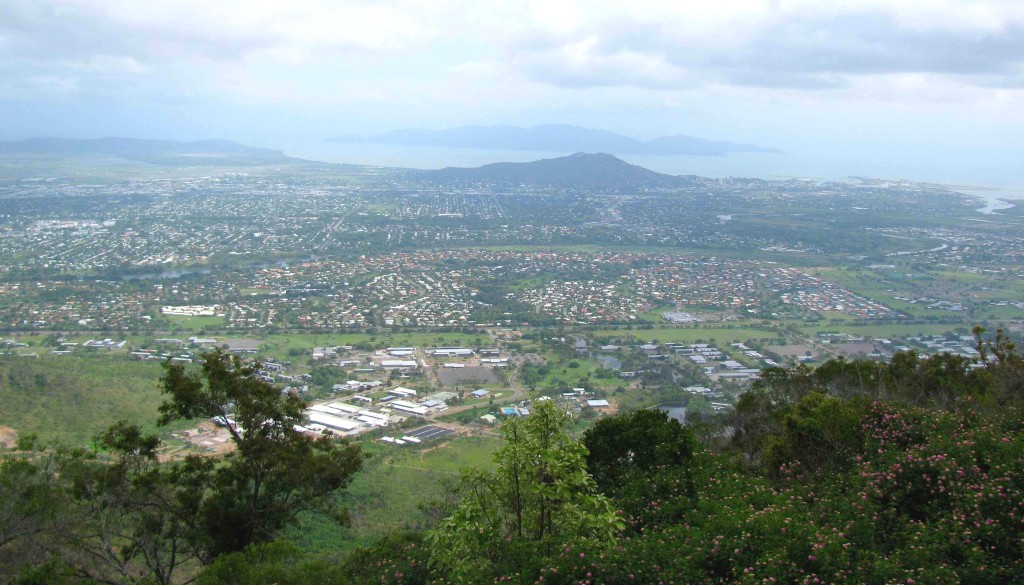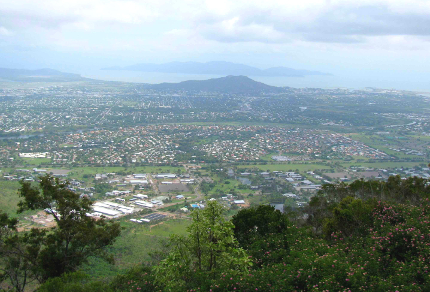At 6 a.m., my bicycle lights flashed white and red into the Queensland twilight as I rode to the fitness track. There, I sat up and chinned up, and swung and rotated hips while dawn swept in with clear light and avian songs – some gentle, some raucous, some like the staccato rattling of machine gun fire. The first, doves, the second, lorikeets, the third, masked lapwings. I rode on, to Aplins Weir, where boulders downstream from the cement barrier lay exposed in a dry jumble reminiscent of the hefty rocks in the flowing boulder fields on the upper slopes of Tassie’s Mount Field, although lacking the latter’s surface encrustations of white, black, and orange lichens. Water spilled over the weir like thin rain, not the thick, pounding waterfalls surging with sound and fury that sprayed moisture onto us during the monsoon lows of late January and February.
Fish hunters were out in force – pelicans plying the serene river like stately ships leaving V-wakes, egrets clustered in pools in the flooded tidal lagoons, and a single black-necked stork standing among the egrets like a magistrate among a coterie of white-robed nuns. Two human anglers stood on the Annandale side of the weir, one reeling in a shining, flopping trophy as I cycled past. Perhaps, I thought, he had caught his barra for Easter dinner. Barramundi eaten with tiger prawns is apparently a popular Easter meal in Queensland, according to Saturday’s Townsville Bulletin.1
Immersed in the excitement of exploring Tasmania, Vilis and I completely lost track of Easter. I had to check the date on a calendar on our return. We had also forgotten entirely about Palm Sunday until we attended a Uniting Church service on Sunday evening and received small crosses fashioned from palm leaflets. The front of the church was decorated with massive palm leaves a dozen or more feet long, the sight of which caused Vilis to quip, “Well, they didn’t have to go far to get the palms.” Not like Canadians, who must order in fronds – invariably small ones – for Palm Sunday.
On my return from cycling, I noticed pink and white blossoms in a raised bed next to the house, the delicate, multi-petalled flowers rising from bulbs planted by some former resident. The rest of the yard was swathed in weeds grown significantly taller during our absence. After breakfast, I began pulling them out by the handful, reminding myself that it was autumn now, the start of the growing season for North Queensland gardeners, even though the growth of native plants would tail off as the dry season set in and Townsville adopted its nickname of Brownsville. And I thought of my flower beds and fruit trees in Nova Scotia, envisioning the snow melting from our yard there, and the leaves of crocuses, tulips, and daffodils pushing upward through soil and bark mulch into night-frozen air.
It was a treat to arrive in Australia during the sunny, relatively long days of late December, when Canada was just beginning to creep away from the short days of winter and into its coldest temperatures. However, the present descent of Queensland into short days, which will become even shorter than their current twelve-hour length as we head for the June solstice, is disconcerting. It seems bizarre to think of celebrating Easter as the days shrink rather than lengthen into the promise of summer, and even more bizarre to see the daylight hours diminishing while air temperatures remain hot during the day and uncomfortably warm at night.
Today, I listened to Neil Young’s “Harvest Moon” and told Vilis that the term ‘harvest moon’ resounded with such sharp images in my mind and emotions – the sweet, yearning warmth of September evenings when crickets still chirp smoothly and vegetables lie heavy on and beneath garden plants, that sweetness all the richer for the knowledge of what lies ahead in the deep, dark cold of winter. Is there, I wonder, a harvest moon in Queensland?
Strictly in terms of hours and minutes of daylight, I suppose Queensland does follow that characteristic sign curve (which resembles the path of a ribbon flicked up and down) that’s so prominent in the Northern Hemisphere. However, here it’s dampened by proximity to the equator. Be that as it may, we’re riding the steepest downward section of the curve now, that sharp plunge toward the short days of June. With thoughts so recently focussed on Canada, my mind balks at saying ‘winter.’ The dry season, yes, but not winter.

Townsville viewed from Mount Stuart
References:
1. Andrew Strutton. High demand for Easter fish dish. Townsville Bulletin, Saturday, March 27, 2010. p. 23.


